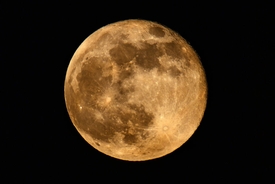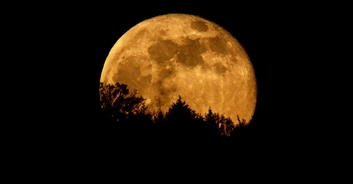If you're a keen stargazer, 2020 has already started delivering the goods. January began with the Quadrantids meteor shower, and the first month of the new decade continues with a penumbral lunar eclipse during the full "wolf" moon on Friday.
January's "Wolf Moon" was given its name by both Europeans and Native Americans due to the lupine howling that could be heard throughout the midwinter.
It's expected to be seen this evening, Friday 10th January, and will be met by a penumbral lunar eclipse. During this celestial event, the moon passes through the edges of the "shadow" that earth casts into space, meaning that some of the sun's light is obscured.
Related - Watch as a full ‘Tiny’ Hunters Moon RisesBecause this is not a total lunar eclipse - where the moon passes entirely through our planet's shadow - the surface of the moon does not take on a red hue when seen from Earth. Instead, the penumbra causes a subtle darkening of the lunar exterior.
The eclipse will last for about four hours, and will be visible on Friday evening to those who live in Asia, Australia, Europe and Africa.
It will be at its greatest point at 7:10pm, but you'll need a clear night's sky to get the best view of the event. Eclipses technically take place during a four-hour period, from around 5:08pm to 9:12pm, so you may able to get a glimpse during this time, although it will likely be much less pronounced.

If you're based in North America, however, you'll have a harder time seeing penumbral lunar eclipse as it begins at 12:06pm. ET and ends at 4:14pm. But those in areas of Alaska, eastern Maine and northern and eastern Canada do have a chance.
Normally, there are 12 full moons in a year because one occurs each month. However, in 2020, October will have two full moons, once on the 1st October and then again on the 31st.


